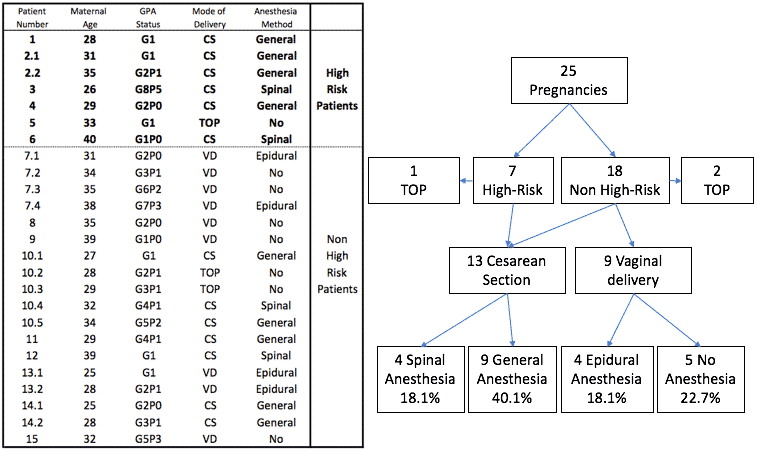
Anesthesia in Parturients Suffering from Marfan’s Syndrome
2Department of Cardiology, Sheba Medical Center
3Department of Obstetrics and Gynecology, Sheba Medical Center
Background: Marfan’s syndrome (MS) parturients may present challenges for anesthesiologists, ranging from hemodynamic instability and aortic dissection1,2, to difficult neuroaxial anesthesia due to dural ectasia3.
Aims: To review data on parturients suffering from MS giving birth in our institution.
Methods: Pregnant MS patients treated in a multidisciplinary clinic and gave birth in our hospital between 2006-2015 were included.
Results: During this period, 15 patients were followed during 25 pregnancies.1 From 7 pregnancies in high risk patients (aortic root diameter ≥ 40 mm); 1 was terminated due to fetal MS diagnosis, 6 deliveries were by a cesarean section (CS), 4 under general anesthesia (GA) and 2 under spinal anesthesia (SA). Among 18 pregnancies in non high-risk patients (aortic root diameter of

Conclusions: Although no anesthesia adverse effects were indicated, post-partum aortic dissection remains a significant problem. MS parturients needs to be followed by a multidisciplinary team in an institution capable of diagnosis and treatment of aortic dissection.
Bibliography:
Kuperstein, R. et al. Am. J. Cardiol. 2017.
Allyn, J. et al. Anesth. Analg. 2013.
Sakurai, A. et al. A A Case Reports. 2014.

Powered by Eventact EMS